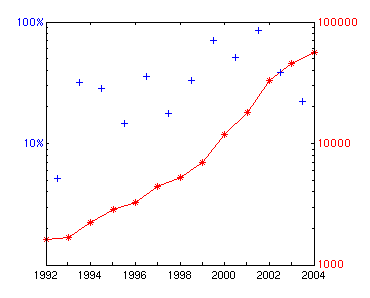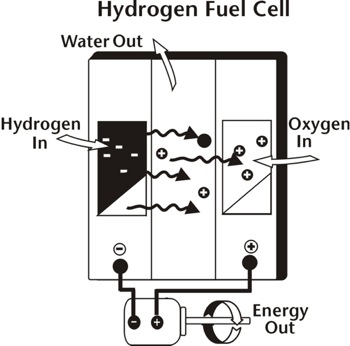Exhausting Fossil Fuels and New Technology
Introduction
With the oil supply lasting for another 50 years, companies have to look for a change in the use of fossil energy sources. Nowadays people become more and more aware of the importance of the environment. This change has a large impact on the mobility of people, in this scenario we will focus on the change of mobility in the Netherlands. Not only the type of transportation will change also the change of mind and new technologies will have his impact on mobility. In the next 10 years energy and environment aware living will get an important piece of our lives. In order to deal with this trend not only public transport will be encouraged but also the use environment friendly types of energy.
Change towards new fuel technologies
The change towards new sources of energy is not a 1 day change, governmental, infrastructural changes have to be made in order to implement new technologies. The Netherlands is a relative small country with a high density especially in the "Randstad". Because a lot of people are living in and next to the Randstad it makes it ideal to change the infrastructure to change it towards the adoption of the new technology. The exhaustion of the fossil fuels is not a new problem, in the past years research is done to power vehicles on another way then gasoline or diesel. The following paragraphs show the technologies that are environment friendly, there is not one final solution they can be used in combination or for specific use.
Electronically Powered Engines
With the upcoming technologies in hybrid models, (small) cars change towards single powered electro engines. These single engined cars are perfect for small trips downtown. These cars are powered via an electronic motor powered via NiMH batteries (but also hydrogen cells could be used) This type of energy source could be effective in crowed cities for small downtown trips. With powerful techniques this could lead into a powerful vehicle. This type of energy has also an advantage on the air quality in crowded cities, the amount of smog during the summer will be radically decreased. At the time of writing Amsterdam prohibited the use of cars older than 10 years in the city center, when the electronic car is accepted into the daily life, cities like Amsterdam could be forced or force to use the electronic engine powered car. The disadvantage of these electronically powered cars is the action radius, batteries can't provide long distance endurance. But with the usage in small cars this technology is ideal for small downtown trips. When people are traveling in the city, they can use public transportation but a lot of these people like to use private transportation. Electronic cars can be used for small trips around the city, with new battery technologies this results into a very flexible vehicle. In order to implement the usage of the car into the daily life, cities have to supply their parking lots with connections to charge the cars, so when it is parked it will be recharged. Figure 1 shows a plot of electric vehicle counts data (red) with annual percentage increases (blue) since 1992.
Hydrogen Powered Engines
With the use of hydrogen a fuel for cars and freighters H2 will be converted in the process into water H2O resulting in one of the most environment friendly types of fuel,the output is just water. Nevertheless these technologies have to be researched in order to implement this technology. With the usage of H2 as fuel for cars and busses, stations have to be build in order to tank hydrogen. Hydrogen can be used in two ways, in the form of fuel cells and directly into the motor. In a fuel cell hydrogen and oxygen is converted into ions (charged particles), to be exact H + and OH-ions. These ions come through electrodes closer together where the + and - ions react with one another while electricity is produced. The OH- and H+ ions then form together as a H2O molecule. The only emissions from the fuel cell is water vapor and therefore no harmful gases like carbon dioxide. The electricity can power electric motors from for instance an electric car. (See Figure 2)
Hydrogen can also be used in a similar way such as LPG. Hydrogen is injected into the car's cylinder. On the basis of the energy generated by the reaction, the motor is driven. In order to successfully implement the hydrogen technique science has to deal with the storage of hydrogen. Also the hydrogen must be accepted by the public. The H2 molecules require a large tank to store enough hydrogen. There are techniques that make it possible to store the molecules under high pressure in solid metal. Another problem is the infrastructure, the current infrastructure the fuel station across the Netherlands are build to supply cars with gasoline, with the space problem in the car the problem is 10 times bigger at the station. The fact is that new stations have to be build to supply the changing demand of fuel.
Biofuel Powered Engines
Biofuel is an liquid or gaseous fuel obtained from biological materials, and is different from fossil fuels which derive from long dead biological material. Biological fuel is obtain from various plants and biological materials. There are two common strategies of producing liquid and gaseous agrofuels. One is to grow crops high in sugar (sugar cane, sugarbeet, and sweet sorghum) or starch (corn/maize), and then use yeast fermentation to produce ethyl alcohol (ethanol). The second is to grow plants that contain high amounts of vegetable oil, such as oil palm, soybean, algae, jatropha, or pongamia pinnata. When these oils are heated, their viscosity is reduced, and they can be burned directly in a diesel engine, or they can be chemically processed to produce fuels such as biodiesel.
Acceptation of new fuel technologies
As said before the change towards an new fuel technology is not a day to day change. People have to prepare themselves on new types of refueling and cars have to be altered of replaced to work on the new technology. As in most projects according change, people are more inclined towards the safe world they now. So this change has to be carried out in phases. In order to roll-out these new technologies an complete new infrastructure of stations and recharge points has to be build in order to ensure a well supply of hydrogen or biofuel. These two technologies have both their pros and cons towards the environment and society, the most applicable type of fuel is the hydrogen powered engine because several reasons. The use of biofuel requires biological material. Waste or not, it has to be produced, and with the growth of the world population this results into a food problem because of the change towards production for fuel, because of the high demand. With new technologies on the storage and production of the hydrogen. Cars could run cleaner to support the environment which makes it ideal on the long run. But in order to supply the Netherlands with hydrogen, a network of stations has to be build, because of the changed requirements of the stations the gasoline based stations can be phased out to overcome the gasoline to hydrogen period. The government can speed up this transformation by giving away bonuses onto new hydrogen cars. Not only hydrogen fuel will become interesting but also the use of electronic engines for city use, these cars can be easily accepted into the daily life because when a city supplies the citizens with connection points. It has also some practical advantages, with the car charged everywhere there is no need to refuel during the trip.
Conclusion
With lacking fossil fuels alternatives have to be found to ensure the transportation and mobility and people. With the use of new technologies like electronic engines and hydrogen, a cleaner type of transportation is realized which doesn't effect the environment like fossil fuels. Biofuels are effective on the short term but are no solution on the long run, pollution stays the same because of the exhaust gasses and result into the overproduction of for example corn and maize. Which creates a shortage in the production of food. So the biofuels could be used to support the demand on fossil fuels with a lacking oil supply, but on the long term a change towards clean, climate neutral technologies like hydrogen which don't exhaust other sources like food or land will become inextricable.

